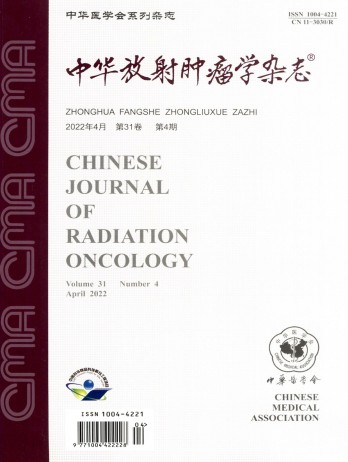A study of an independent dose verification software for brachytherapy
引用次数: 0
Abstract
Objective To report an implementation method and results of an independent brachytherapy dose verification software (DVS). Methods The DVS was developed based on Visual C+ + and the modular structure design was adopted. The DICOM RT files exported from the treatment planning system (TPS) were automatically loaded into the DVS. The TG-43 formalism was employed for dose calculation. Six cervical cancer patients who underwent brachytherapy were retrospectively selected to test the DVS. Different applicators were utilized for each patient. Dosimetric parameters and γ analysis (0.1cm, 5%) were used to evaluate the dose difference between the DVS and the TPS. Results Compared with the TPS dose, the γ pass rates of the doses calculated by the DVS were higher than 98%. For CTV, the dosimetric differences were less than 0.29% and 0.53% for D100% and D90%. For bladder, rectum and sigmoid, the agreement of D0.1cm3, D1cm3 and D2cm3 within a 0.5% level. Conclusion With minimal human-computer interactions, the DVS can verify the accuracy of dose calculated by TPS for brachytherapy. Key words: Brachytherapy; Dose verification; Treatment planning system; Quality assurance近距离放射治疗独立剂量验证软件的研究
目的报告一种独立的近距离放射治疗剂量验证软件(DVS)的实现方法和结果。方法基于Visual C++开发DVS,采用模块化结构设计。从治疗计划系统(TPS)导出的DICOM RT文件被自动加载到DVS中。TG-43形式用于剂量计算。回顾性选择6例接受近距离放射治疗的癌症患者进行DVS测试。每个患者使用不同的治疗器。剂量测定参数和γ分析(0.1cm,5%)用于评估DVS和TPS之间的剂量差异。结果与TPS剂量相比,DVS计算的剂量γ通过率高于98%。对于CTV,D100%和D90%的剂量测定差异分别小于0.29%和0.53%。对于膀胱、直肠和乙状结肠,D0.1cm3、D1cm3和D2cm3的一致性在0.5%的水平内。结论DVS可以在最小的人机交互下验证TPS计算的近距离放射治疗剂量的准确性。关键词:近距离治疗;剂量验证;治疗计划体系;质量保证
本文章由计算机程序翻译,如有差异,请以英文原文为准。
求助全文
约1分钟内获得全文
求助全文
来源期刊
自引率
0.00%
发文量
6375
期刊介绍:
The Chinese Journal of Radiation Oncology is a national academic journal sponsored by the Chinese Medical Association. It was founded in 1992 and the title was written by Chen Minzhang, the former Minister of Health. Its predecessor was the Chinese Journal of Radiation Oncology, which was founded in 1987. The journal is an authoritative journal in the field of radiation oncology in my country. It focuses on clinical tumor radiotherapy, tumor radiation physics, tumor radiation biology, and thermal therapy. Its main readers are middle and senior clinical doctors and scientific researchers. It is now a monthly journal with a large 16-page format and 80 pages of text. For many years, it has adhered to the principle of combining theory with practice and combining improvement with popularization. It now has columns such as monographs, head and neck tumors (monographs), chest tumors (monographs), abdominal tumors (monographs), physics, technology, biology (monographs), reviews, and investigations and research.

 求助内容:
求助内容: 应助结果提醒方式:
应助结果提醒方式:


